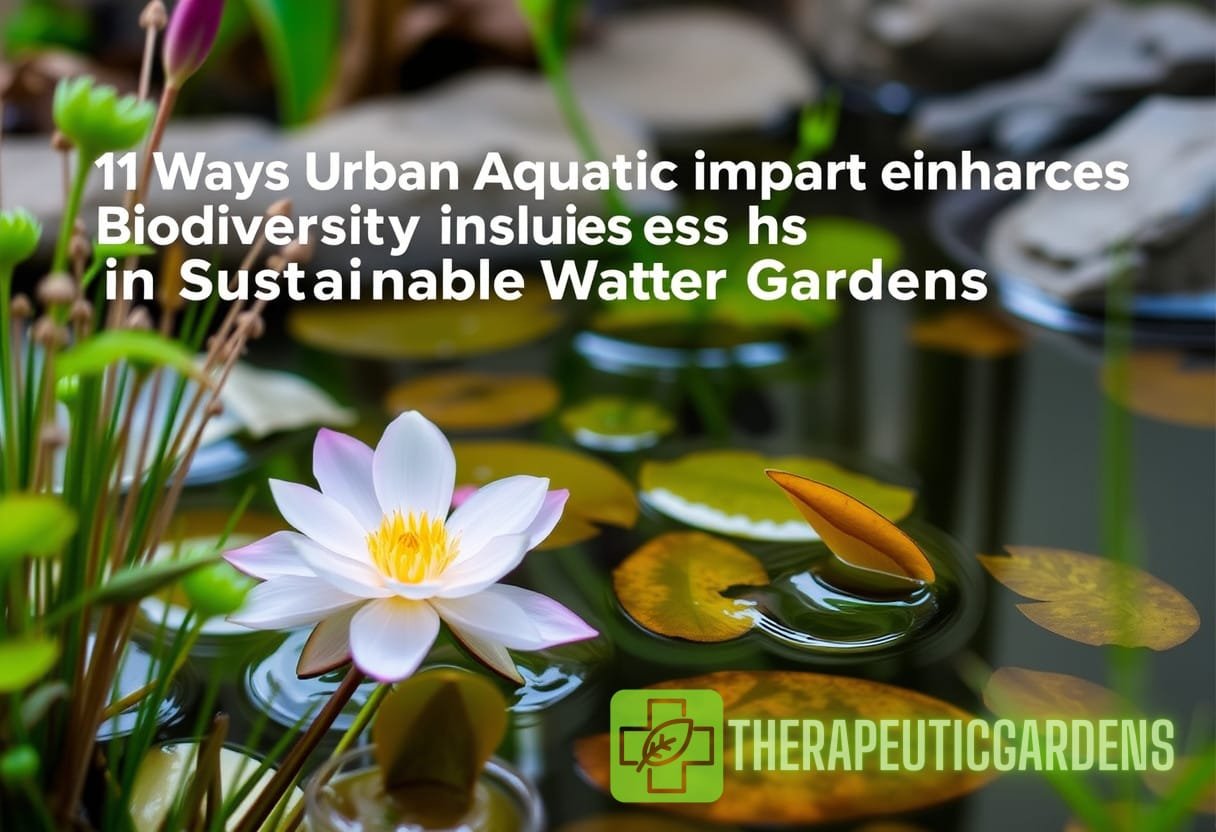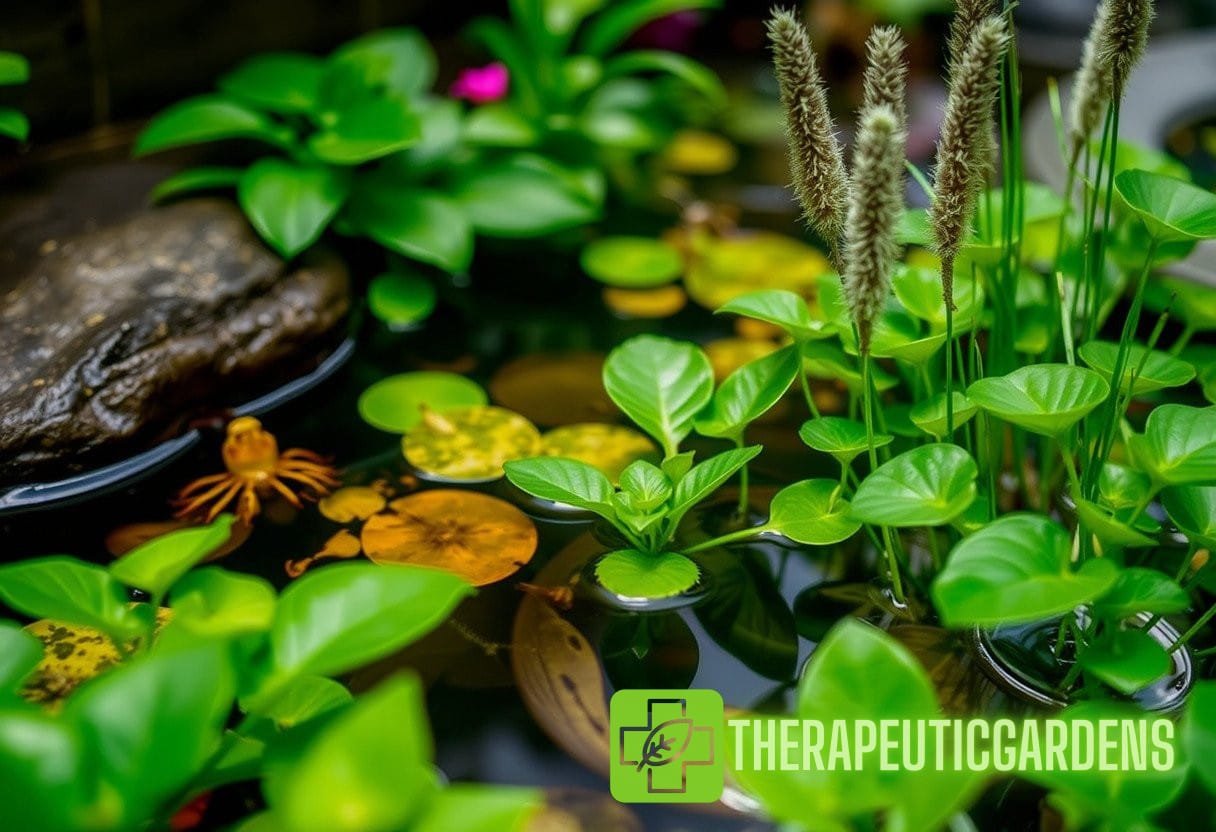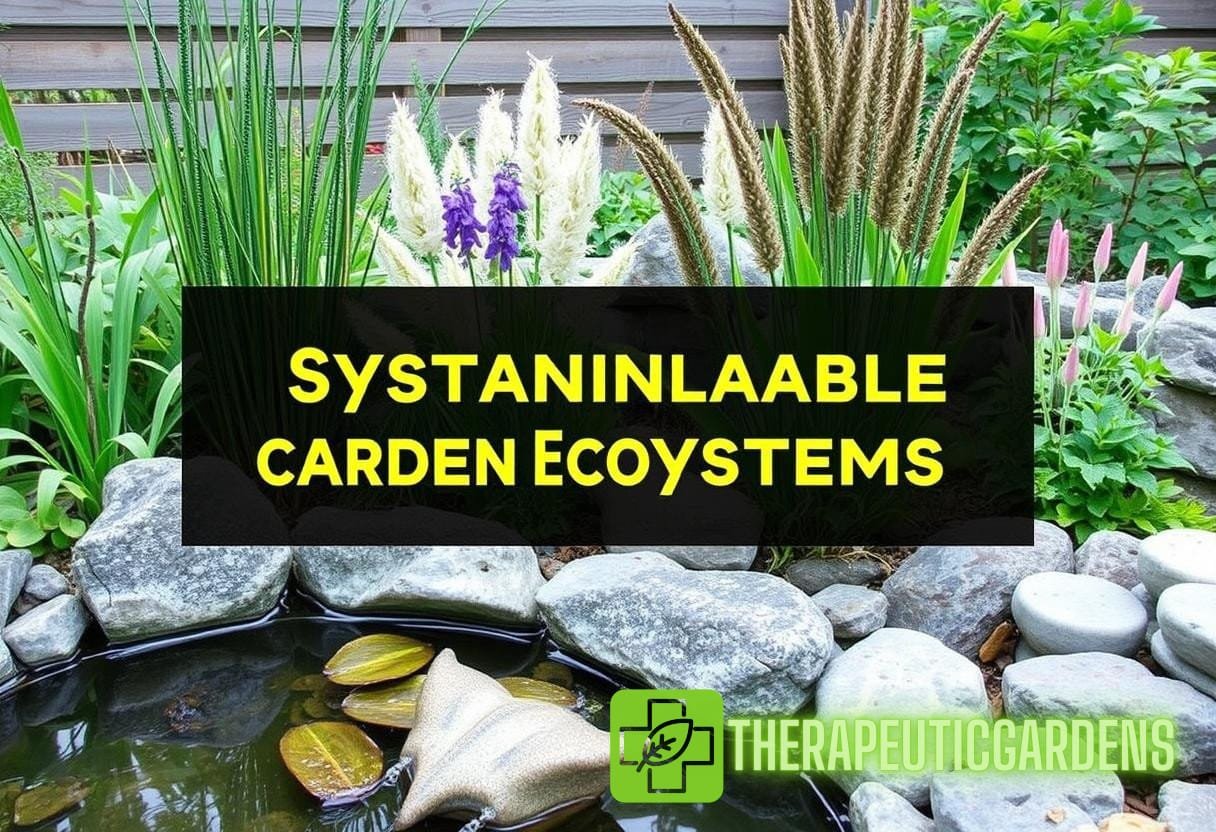Synergistic Water Gardens: Exploring the Role of Aquatic Biodiversity in Sustainable Urban Landscapes
Water gardens represent a vibrant fusion of aesthetics and ecology, especially within urban environments. As cities expand and authorities grapple with sustainability, the implementation of synergistic water gardens emerges as a promising solution. This guide delves into the concept of synergistic water gardens, focusing on the importance of aquatic biodiversity and its contribution to improving the urban aquatic impact.
The Concept of Synergistic Water Gardens
Synergistic water gardens refer to artificially constructed ecosystems that integrate various aquatic plants, animals, and microorganisms to achieve ecological balance. These gardens serve multiple functions, including stormwater management, habitat restoration, and enhancing urban biodiversity.
Key features of synergistic water gardens include:
- Diversity of Life: Incorporating a variety of plant and animal species to promote resilience.
- Water Filtration: Utilizing biological processes to clean water, reducing runoff pollution.
- Climate Regulation: Contributing to temperature moderation in urban areas through evaporative cooling.
- Enhancement of Aesthetics: Creating visually appealing landscapes that are beneficial to mental health.
Importance of Aquatic Biodiversity
Aquatic biodiversity is a crucial element of any sustainable water garden. It fosters ecosystem stability and function while playing a vital role in managing nutrients and pollutants. According to the United Nations Environment Programme (UNEP), the loss of biodiversity can significantly impair an ecosystem’s ability to perform these essential services.
Benefits of aquatic biodiversity include:
- Nutrient Cycling: Healthy populations of microorganisms and plants facilitate the breakdown and conversion of pollutants into less harmful forms.
- Habitat Provision: Diverse aquatic flora and fauna provide shelter and breeding grounds for various species.
- Pest Control: Natural predators within these ecosystems help maintain balanced populations of algae and insects.
Creating a Synergistic Water Garden
Establishing a synergistic water garden begins with careful planning and consideration of local environmental conditions. Here’s a breakdown of the steps involved in creating an effective water garden:
- Site Selection: Choose a location with sufficient sunlight and accessibility to water sources.
- Design Planning: Incorporate various water depths, plant zones, and habitat features to support diverse species.
- Plant Selection: Utilize native aquatic plants that can thrive in local climates and promote ecological balance.
- Water Quality Management: Monitor and manage water quality, ensuring optimal conditions for aquatic life.
- Ongoing Maintenance: Regularly maintain the ecosystem through weeding, pruning, and pollutant management.
Impact of Urban Aquatic Biodiversity

The urban aquatic impact of synergistic water gardens goes beyond their immediate surroundings. These gardens address critical urban issues, such as flooding, pollution, and biodiversity loss. Multiple case studies highlight the profound benefits of integrating aquatic biodiversity into urban settings.
Case Study: The High Line Park, New York City
The High Line, a renowned elevated park, showcases the benefits of urban water gardens. Through its design, it features a diverse array of native plants and water features that provide vital habitat for birds and beneficial insects.
The park has also improved local air quality, reduced runoff, and offered a green respite from the urban sprawl. These outcomes underscore the potential of synergistic water gardens in transforming cityscapes.
Statistics Highlighting Urban Aquatic Impact
Research indicates that urban ecosystems can enhance local biodiversity. A study published in Journal of Urban Ecology found that urban green spaces, including water features, can support up to 20% more species diversity compared to standard urban environments. This increased biodiversity plays a critical role in ecosystem services, such as:
- Reducing urban heat islands by 2-5°C.
- Improving water retention in urban areas by up to 30%.
- Enhancing pollinator habitats, which are vital for food production.
Recommended Plants for Synergistic Water Gardens
Choosing the right plants is essential for promoting biodiversity and creating a thriving aquatic ecosystem. Consider the following categories of plants that work well in synergistic water gardens:
- Submerged Plants: Such as Elodea and Ceratophyllum, these plants oxygenate the water and provide habitat for aquatic life.
- Floating Plants: Lemna (duckweed) and Nymphaea (water lilies) offer shade and reduce algae growth by limiting sunlight penetration.
- Marginal Plants: Lythrum salicaria (purple loosestrife) and Schoenoplectus (bulrush) can stabilize banks and provide breeding grounds for various species.
- Emergent Plants: Iris and Juncus support wildlife while acting as natural filtration systems.
Role of Microorganisms in Aquatic Ecosystems
Microorganisms play a fundamental role in maintaining the health of aquatic systems. They decompose organic matter, recycle nutrients, and help regulate water quality. In a synergistic water garden, beneficial microorganisms work alongside plants and aquatic animals to create a balanced ecosystem.
- Bacteria: Convert organic materials into nutrients, which are then available for plants and aquatic life.
- Fungi: Assists in breaking down complex organic compounds, thus enriching the substrate.
- Protozoa: Consume bacteria and provide a food source for larger organisms, facilitating the food web.
Challenges of Implementing Synergistic Water Gardens
While the advantages of synergistic water gardens are significant, several challenges can arise during their implementation and maintenance. Understanding these challenges is vital for effective management:

- Contamination Risks: Urban runoff can introduce pollutants that hinder ecosystem performance.
- Invasive Species: Invasive flora can disrupt the balance of the ecosystem, necessitating management strategies.
- Water Management: Ensuring adequate water flow and quality is crucial for sustaining aquatic life.
Solutions to Common Challenges
Addressing the challenges of synergistic water gardens involves proactive measures:
- Integrated Management Practices: Implementing green infrastructure, such as bioswales, to minimize contamination.
- Regular Monitoring: Conducting routine checks on species health and water quality to ensure ecosystem balance.
- Public Education: Raising awareness among community members about the importance of native plants and biodiversity.
Synergistic Water Gardens in Urban Design
Urban planners are increasingly recognizing the potential of synergistic water gardens within urban design. These gardens contribute to urban aquatic impact by offering multifunctional spaces that support wildlife while enhancing community aesthetics and resilience.
Innovative approaches in urban design include:
- Green Roofs: Incorporating water gardens into building designs to create ecological corridors.
- Community Partnerships: Engaging local organizations in the design and maintenance of public water gardens.
- Policy Integration: Advocating for comprehensive urban planning policies that integrate biodiversity principles.
Future of Synergistic Water Gardens
The future of synergistic water gardens looks promising, as more cities adopt sustainable practices for managing urban landscapes. Innovations in technology, community engagement, and ecological science will continue to shape the development of these vibrant ecosystems.
As cities strive to mitigate climate change effects and bolster resilience against urban pressures, synergistic water gardens will play an integral role in fostering biodiversity. By promoting the urban aquatic impact, these gardens provide urban dwellers not only with aesthetic pleasure but also with healthy ecosystems capable of supporting life.
Further Reading and Resources
For those interested in how synergistic water gardens can influence urban landscapes, here are some valuable resources:
- US Environmental Protection Agency: Benefits of Water Gardens
- Urban Ecology and its Roles in Water Management
- Nature: Urban Biodiversity and Its Impact
For more information on garden design concepts, visit our pages on water garden designs and sustainable gardening techniques.



